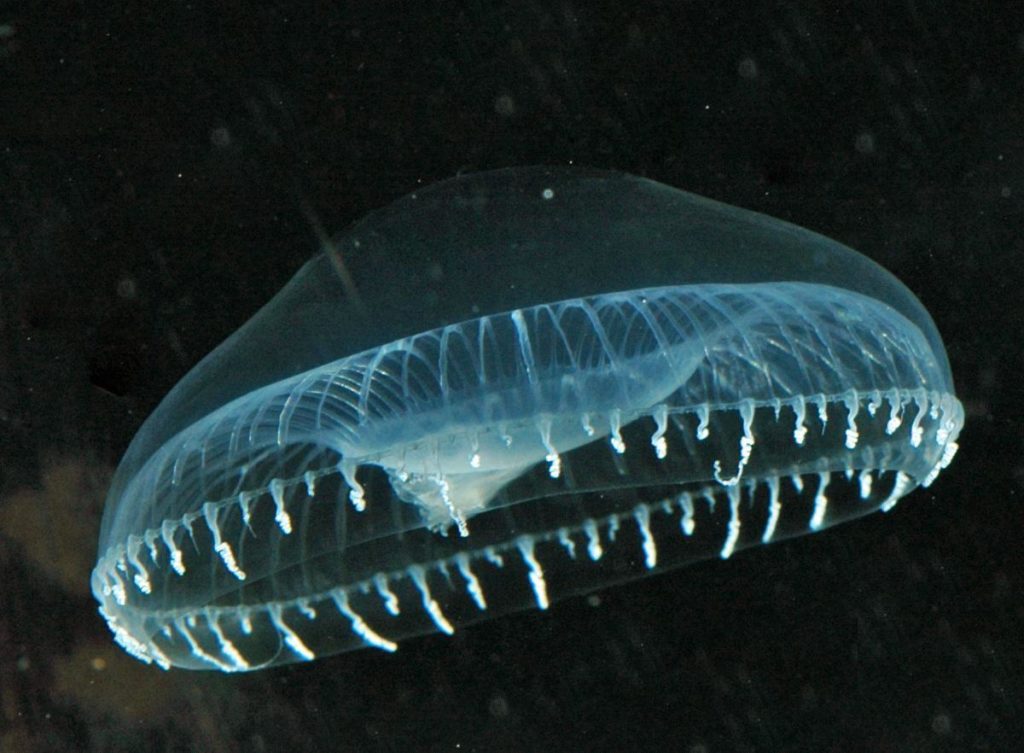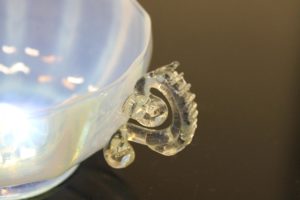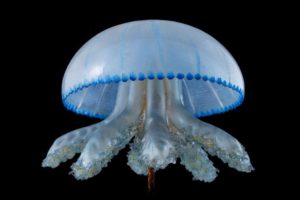
Emulation of Nature: Glassy Imitations of the Sea
…all the effects of glass are marvelous (sic). Considering its brief and short life, it cannot and should not be given too much love, and it must be used and kept in mind as an example of the life of man and of the things of the world which, though beautiful, are transitory and frail.
The Pirotechnia of Vannoccio Biringuccio (Venice, 1540)

This delicate and thin Venetian glass bowl is striking in its emulation of nature. Several of its features reflect an interest in the world of the sea and allude to maritime creatures. On a simple visual level, the pincered handles look like the back of two transparent hippocampi or seahorses holding the bowl together.
On a subtler level, the bowl itself appears to emulate jellyfishes.

Credits: Cornell Collection of Blaschka Invertebrate Models, Cornell University, NY
Photographer: Gary Hodges
The rounded shape and ribs of the object could resemble the soft bodies of the jellies and the gelatinous umbrella particular to those organisms. Under certain natural light conditions, the bowl has the appearance of the Aequorea victoria or crystal jellyfish whose characteristic is to be both translucent and compact. The tentacles of these creatures are inside the umbrella bell, making them different from the jellies whose limbs float below their bodies.
Jellyfishes also caught the attention of the 19th century glass artists, Leopold and Rudolph Blaschka, widely admired in their time for their exquisite skills in the reproduction of several flora and fauna species. Although aesthetically quite different, Blaschka’s creations could be compared to this delicate Venetian glass bowl in their similar maritime inspiration; suggesting that the sea offered an obvious source of inspiration – whether literal or more subtle – to glassmakers through the centuries.

